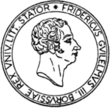The Finnish artist Matti Kujasalo discovered his love for art as a child. His grandmother, herself an accomplished artist, encouraged him to draw and paint very early on. After his school years he took courses at the Free Art School in Helsinki, and in 1964 he enrolled at the Academy for Fine Arts. There he drew models and painted landscapes. After various trips abroad, including USA, he began to develop his own geometric constructivist style. At first he used the square as basic element and then went on to use pure line-structures. His aim throughout was to generate movement in his pictures with simple means.
Soon he was using line-structures whose aesthetic foundations can be traced back all the way to the suprematists and to Mondrian, and which have often been the subject of artistic controversy. Initially his line-structures arose from a basic concept which was relatively easy to understand, as in the frontispiece entitled "Varese". But soon he was using increasingly complex line-structures, resulting in complicated patterns that are very difficult to decode. His work is decisively determined by forms, in particular the spaces between lines and corners, embedded in the contrast of light and dark.
His works of art always evolve in several steps. The process begins with giving the canvas, which is mounted on a wooden board, an undercoat of paint. Then, strips of adhesive tape of widths down to 0.1 millimetre are placed on the canvas and the entire surface is given a first coat of paint. This step is repeated according to the number of different colours. Matti Kujasalo rarely uses more than three colours and usually restricts himself to white, black and grey. The last step consists in carefully removing the strips of tape, thus revealing the painting.
The exhibited work of art has a special place in Kujasalo's oeuvre. Firstly, it is substantially influenced by his Italian journey (1988), which is recognizable in its terracotta tone, and secondly, it was then that he began to reduce the direct comprehension of his pictures. It was his aim to let only the painting speak to the viewer, without revealing its basic idea. The painting shows four different colour planes. There is the terracotta undercoat, then come a black and a white coat. On the undercoat several pencil lines are discernable - these are evidence of the step-by-step process. The final plane is given by black lines which let the white coat below shimmer through. They were applied with graphite before the removal of the adhesive tapes.
This work of art is meant to irritate the viewer's eye. The strong contrast between black and white soon leads to a flickering of the lines, imparting a dynamic component to the picture and a strong sense of movement.






